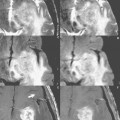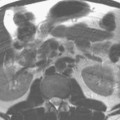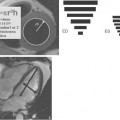58 Fat Suppression: Phase Cycling
The two hydrogen-based longitudinal magnetizations used in MRI have their origins in adipose (fat) and water-containing tissue. Because of the different electronic environment in adipose tissue, the resonance frequency of that magnetization is x~3.5 ppm lower than that of water (~ -220 Hz on a 1.5 T system, as previously noted). With time, after the initial excitation (Fig. 58.1), the transverse magnetization within adipose tissue falls behind the transverse magnetization within water-containing tissue. The time of the gradient echo-specifically, when the MR signal is observed-can be chosen so that the transverse magnetizations from fat and water are either opposed-phase or in-phase.
The duration of the acquisition window in a pulse sequence is inversely proportional to the bandwidth of the sequence. If the bandwidth is large enough (and thus the acquisition window very short), it is possible to acquire opposed-phase and in-phase images simultaneously with a double-echo gradient echo sequence (Fig. 58.1
Stay updated, free articles. Join our Telegram channel

Full access? Get Clinical Tree








